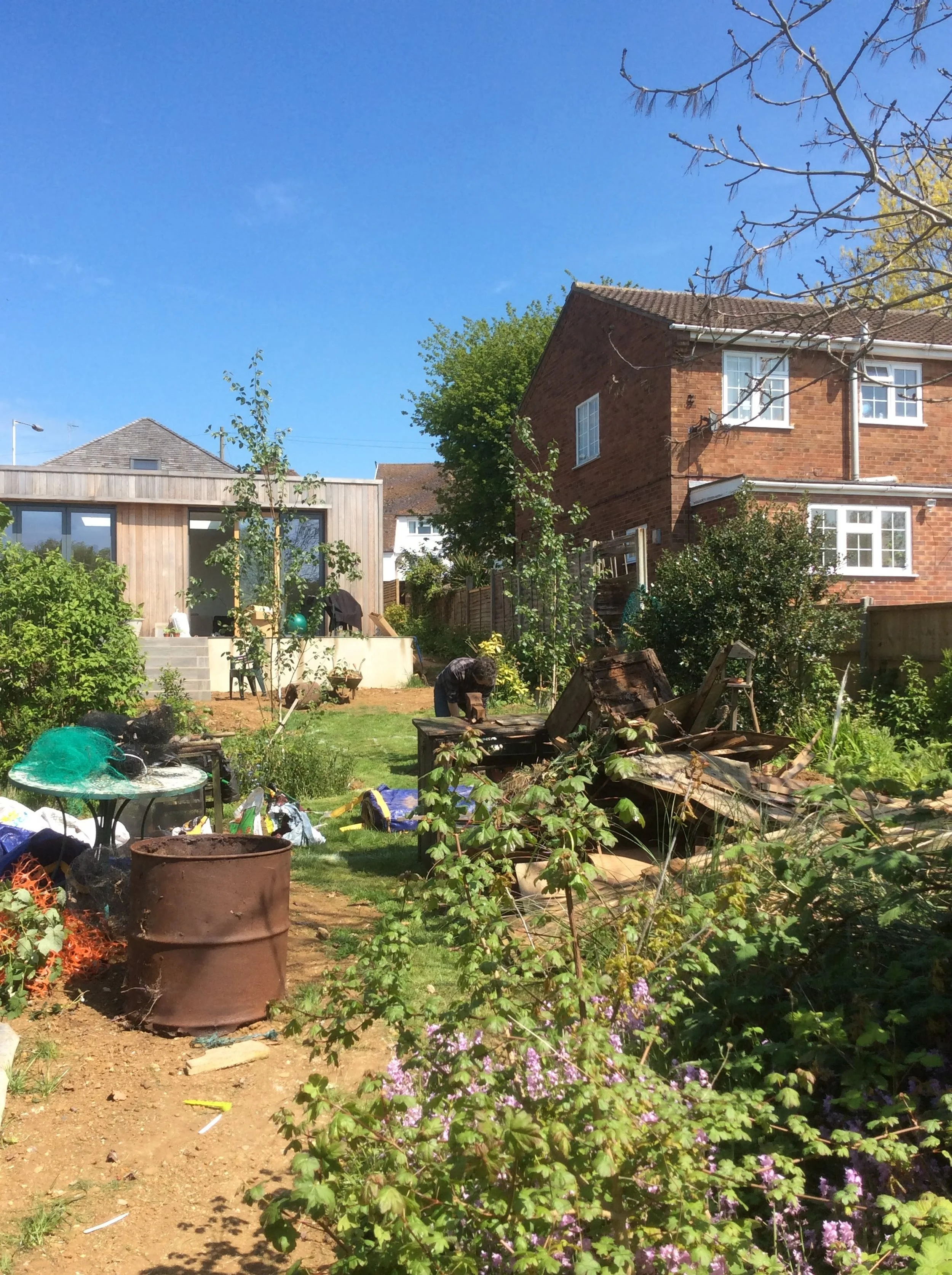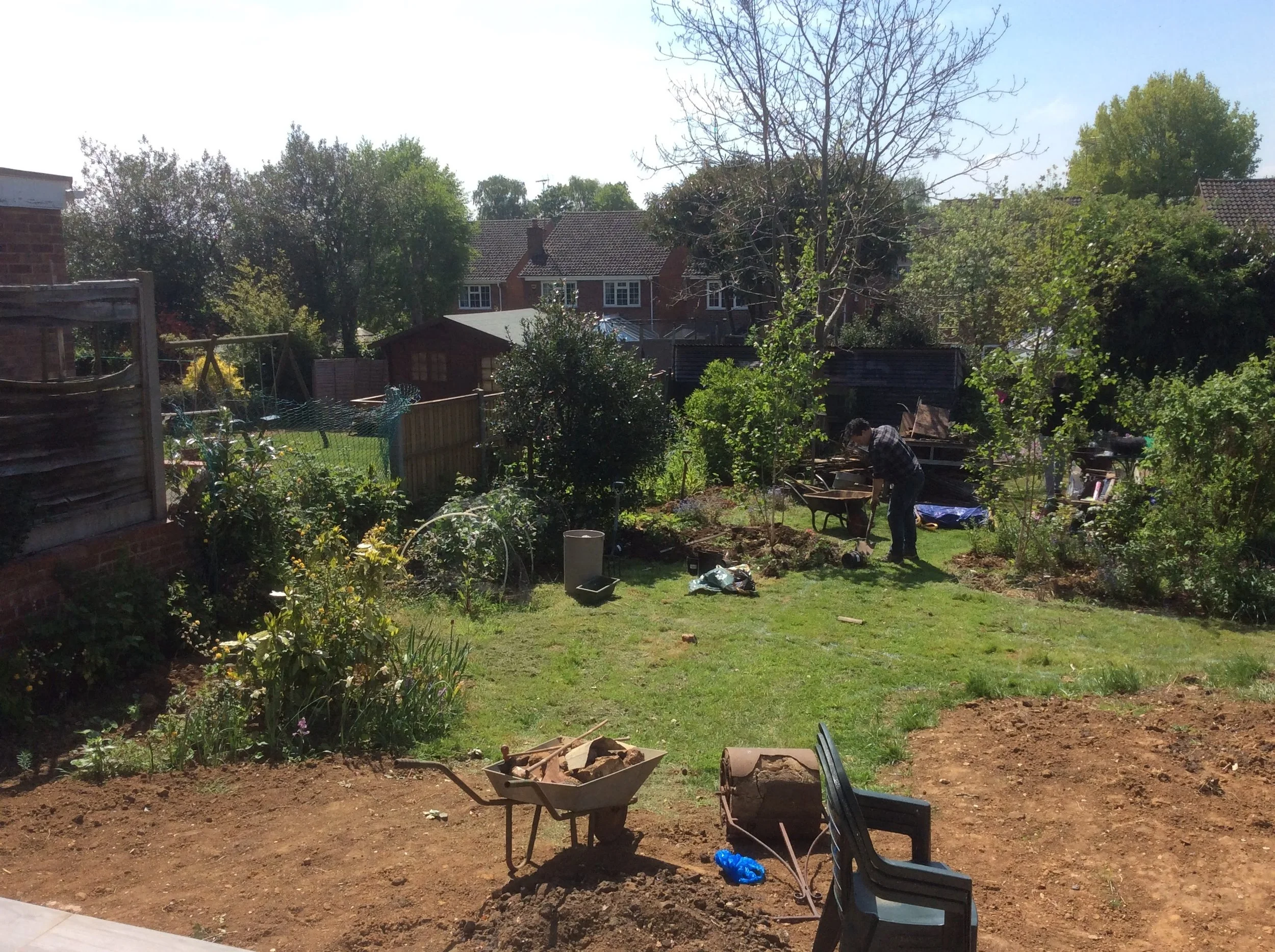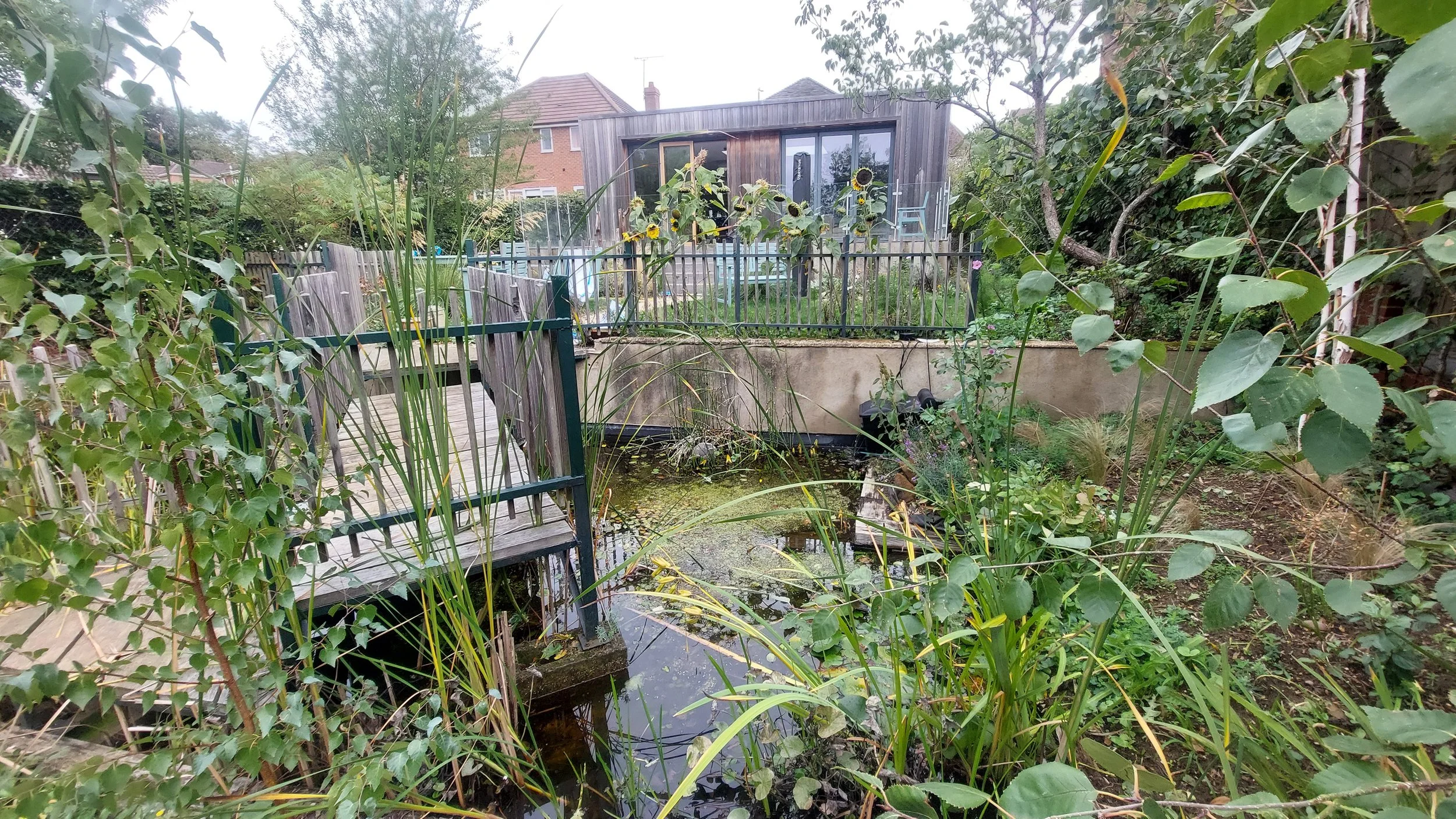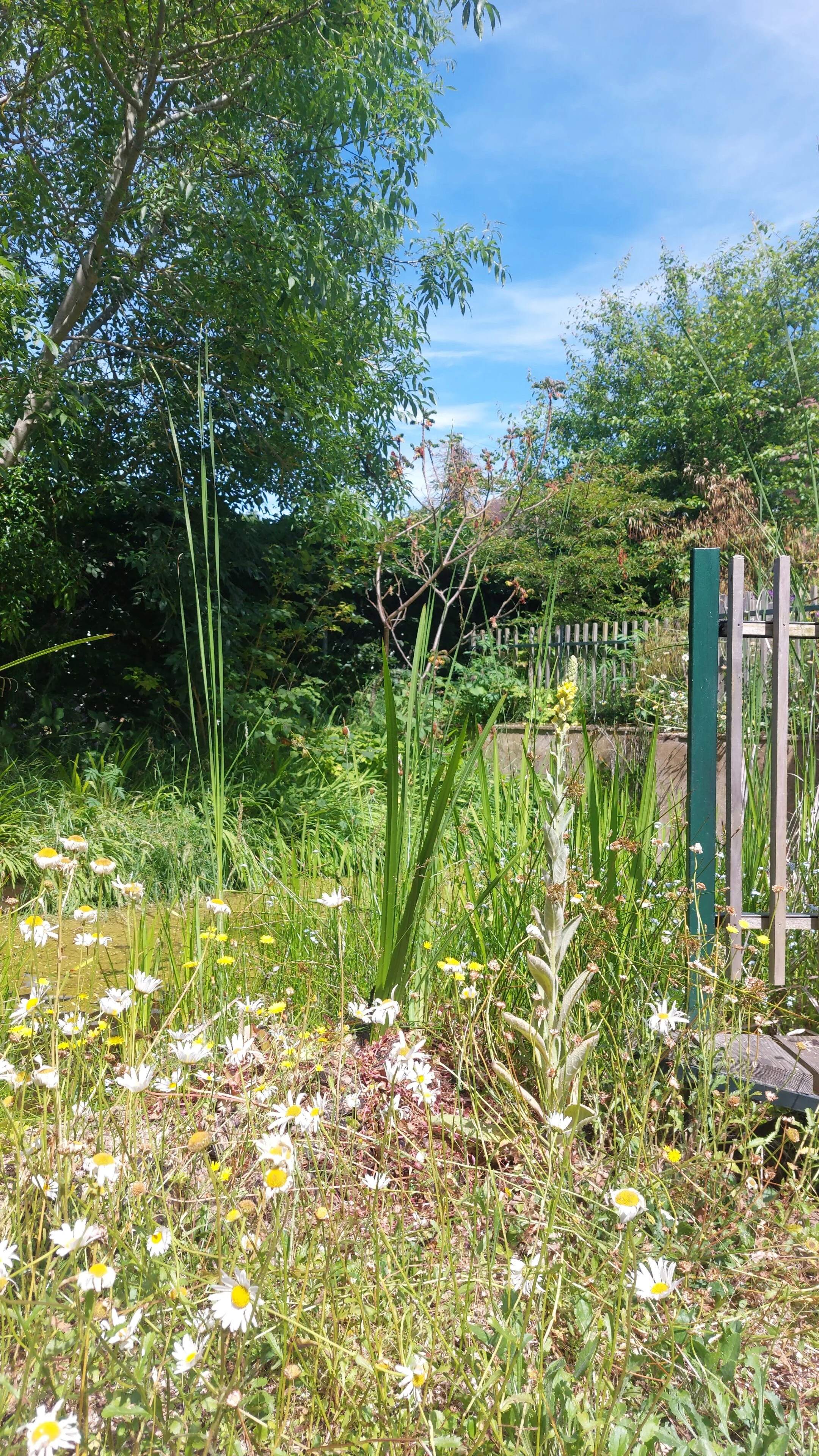works in progress
A few years back, some old friends bought a bungalow. After a disastrous build and getting conned along the way, they finally managed to put up a cedar-clad extension. That’s when they asked me to tackle the garden.
My first estimate came out at twice their budget, so I stripped it right back. The essentials were digger hire, a big retaining wall, and a pond liner. Luckily, the local Jewson’s had a pile of 8x4s they were desperate to shift, so we grabbed the lot for £60. Everything else was labour.
Over the years the owner worked abroad, and the house had two different tenants, each with their own needs. I looked after the garden once a month for a few years; it gave me some great respite during Covid, as I could work outdoors there.
One tenant needed railings to stop their kids falling into the pond. That meant rebuilding the original bridge, this time with a “Meccano-like” set of angle bars and some Douglas Fir I’d scavenged from a builders’ merchant clearance pile. The challenge was getting from the higher level on one side to the lower level on the other: too steep for a straight run, too uneven for an arch. In the end, a stepped design solved the problem perfectly.
More recently, I built the steel-framed gates. They tested my skills, but I still managed to put them together for half the cost of a manufacturer’s quote. The wood is Douglas Fir, which will soon weather to the same silvery grey as the cladding. I machined it all at Bloqs—more on that another time.
Wildlife has been one of the real rewards. I’ve spotted four species of dragonfly, along with demoiselles and damselflies. The pond is thick with newts, often outnumbering the reeds. Sometimes the shallow water dries up, but that stress actually benefits biodiversity.
Filtration has kept the pond from turning into green soup, though clearing the algae was painstaking. Every rake-load came out tangled with newts, and Ive spent hours gently teasing them free so they wouldn’t dry out.
Some plants were hammered by the brutal summers, but I’ve left space for hardy natives to thrive. Wild marjoram has taken hold, and next year a bed of silvery mullein should flower and scatter seed. With luck, mullein moths will follow, their caterpillars are spectacular.
This garden is utterly pesticide and herbicide free. The pond life doesn't need any of it. Neither does the long list of living things that co-habit here.
custom bbq, perfect for skewers, nakiyiku, and general yumnosity
A very living and lived-in garden.






